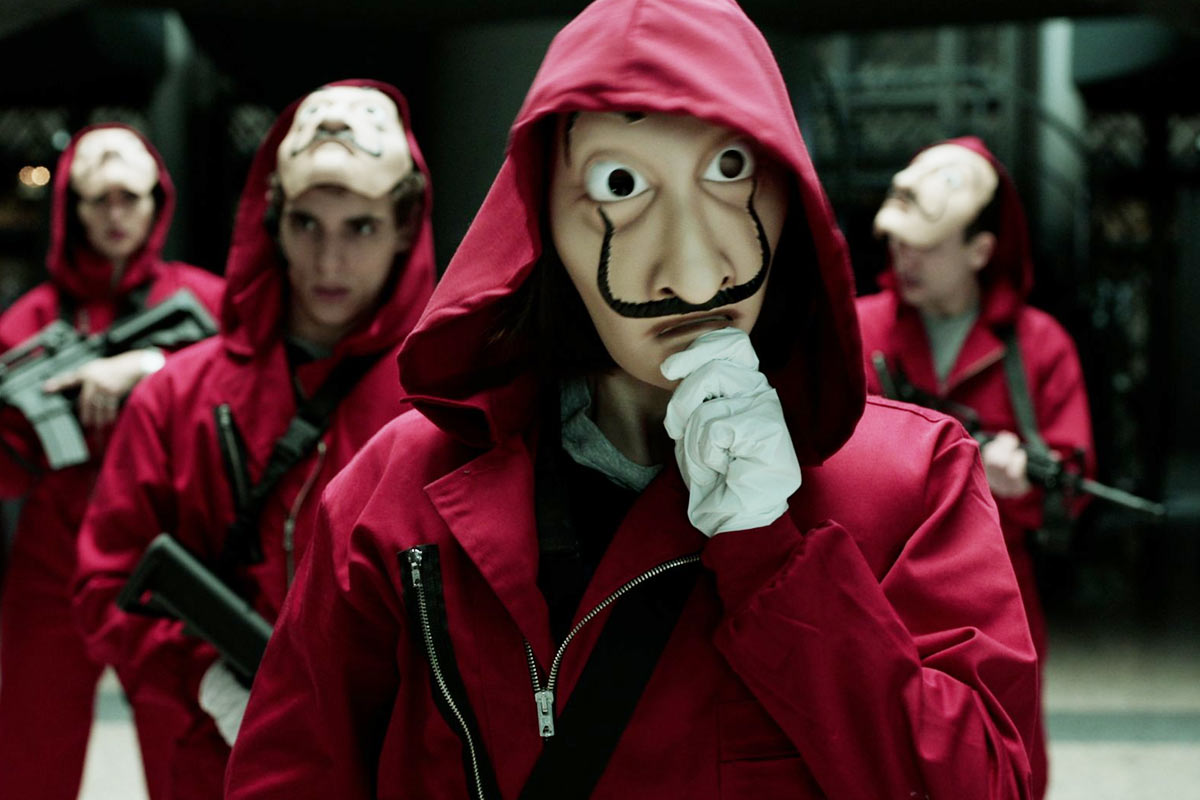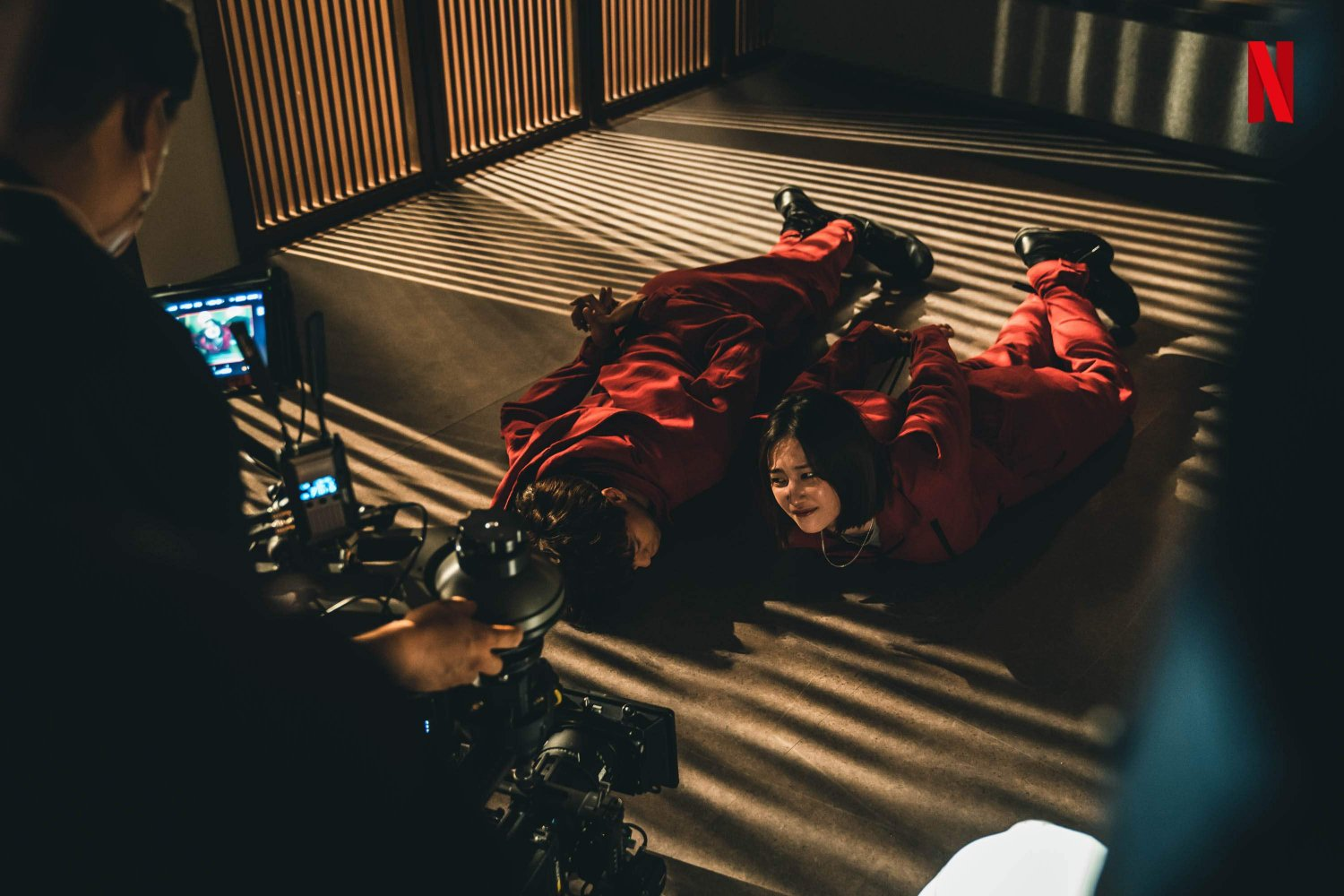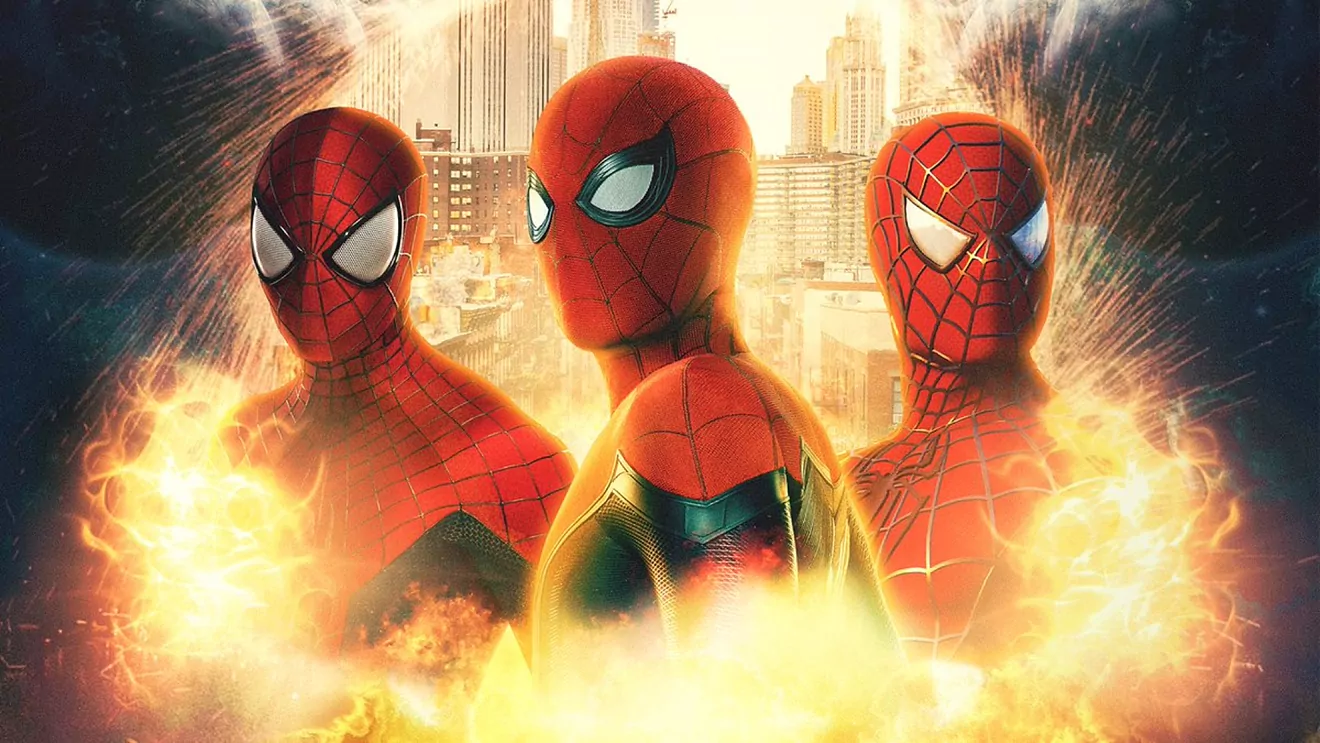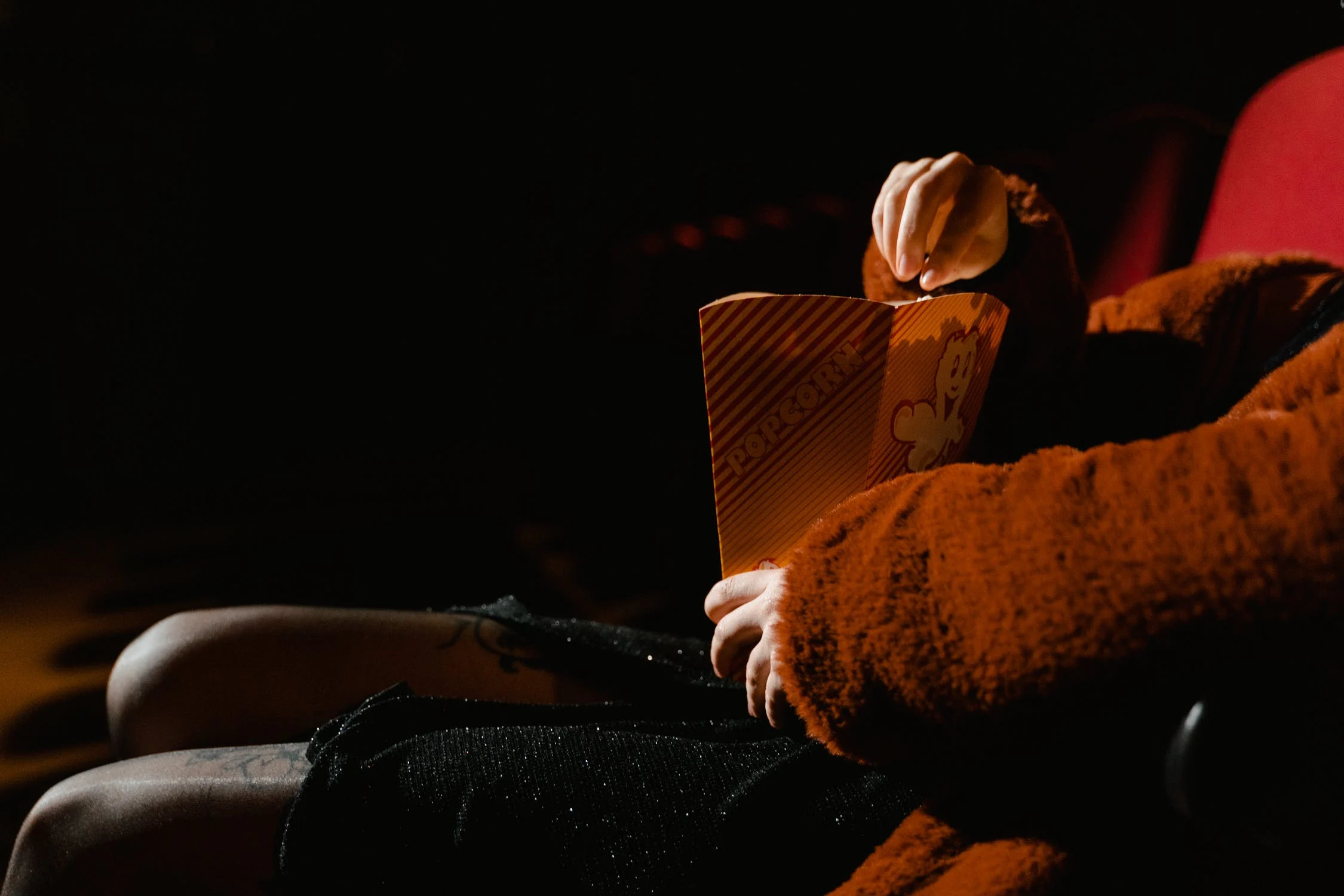‘Money Heist: Korea’: What it really shows us about consumerism and reboot culture
It's rewind time

We live in a time where media is so accessible that it can be overwhelming. From streaming platforms like Netflix and Disney+ to the sheer volume of films being released on the regular, there’s no shortage of content to watch. Knowing all this, there are bound to be sequels and reboots—it’s a byproduct of the influx of media we demand for our consumption. With that being said, it poses the question of whether sequels are inherently bad. A recent addition to the Netflix catalogue, Money Heist: Korea–Joint Economic Area, has become the crux of this debate. With critics simultaneously praising the performances of the lead cast and condemning the seemingly-uninspired adaptation, this Money Heist remake is a clear example of how reboots aren’t as black-and-white as they seem.
This isn’t the first or last time that we’ll see reboots like this in the foreseeable future, either—in fact, reboots, sequels and prequels have become so normalised in recent years that in June 2022 alone we saw multiple massive franchise films, including Lightyear, Jurassic World: Dominion and Minions: The Rise of Gru. That’s what we’re here to assess—why are we seeing so much franchise programming?

Money Heist: Korea and reboot culture
It only makes sense that we begin a conversation regarding consumer culture with Netflix’s newest reboot. With Money Heist already being incredibly successful at its release, the remake, which was announced only three months after the release of the hit Korean series Squid Game, seems like Netflix’s attempt to ride the coattails of both shows’ success. In line with popular criticism of reboots in general, Money Heist capitalises on fan-favourite characters—a sure-fire way of getting fans of the original to watch the remake as well.
Many critics claim that Money Heist: Korea follows a storyline which is essentially a compressed version of the original source, and they wouldn’t be entirely wrong. In fact, the reboot has been condemned as too faithful to the original. But what isn’t being factored into the equation is the new cultural context (and hence, thematic exploration) that Money Heist: Korea facilitates—titled ‘Joint Economic Area’, this remake tackles wealth disparity and systemic power abuse, which are themes heavily explored by Korean media. The focalisation of this narrative through the lens of class conflict provides an entirely unique cultural meaning, this near-future setting completely different from La Casa de Papel’s 2010s backdrop. So, even if the general plot, motives, and characters remain the same, there is a distinct cultural difference that separates it from its counterpart, and this is called cultural relativism.
While all the above criticisms are fair, Money Heist: Korea is evidence that we can’t reduce reboots as a whole into either the ‘good’ or ‘bad’ category—there are no perfect reboots, but that may not mean they’re all worthless additions to cinema either.

What’s the deal with reboots—are they inherently bad?
The appeal of producing reboots to production houses is simple—they are commercially predictable, and as a result, likely to produce high revenue at the box office and through the production of related merchandise, like action figures. Arthouse films, which tend to be the passion projects of inspired, well-intentioned filmmakers, are often not financially stable or viable due to grittier subject matter and the inability to capitalise off existing audiences.
Live-action remakes are increasingly popular ways of remaking films without having to think of original content—for example, Cinderella has been rebooted thrice now, with narratives that tend to draw quite a lot from the original animated film. 2017 to 2019 saw a stream of Disney live-action remakes, most of which (plot-wise) were exact replicas of their original animated counterparts. Mega corporations like the Disney company have the intellectual property rights over so many franchises—with the original Disney films, the Marvel Cinematic Universe and Star Wars to name a few—that they don’t have to spend effort creating new projects, because the fanbase is so vast as it stands. The greater the fanbase, the easier it is to milk these products, and with every new related film that comes out under them, that fanbase (and means of profit) only grows in size. That isn’t to say that there aren’t any more good movies coming out, but many of them are niche films, and will likely find it more difficult to find adequate funding going forward.
What makes a bad reboot?
The most publicly known example of a corporation which produces a vast quantity of films is the Disney company. Lots of new, big-budget Disney films and series are being produced—Lightyear, Doctor Strange: Multiverse of Madness and Spiderman: No Way Home, to name a few—which capitalise on already-strong fanbases without having genuine creative inspiration on the direction in which to take their characters. That isn’t to say these films aren’t enjoyable, but what becomes increasingly apparent as new sequels take the stage is that their success is contingent on the reintroduction of already-popular characters.
Adding to this, the almost-obscene rate at which these sequels are being produced detracts from the actual meaning or purpose of their narratives. Going from one or two projects a year pre-pandemic to over ten projects in 2021, the quality has suffered as well, with ratings for Lightyear coming at a low 5.3/10 on IMDB—a jarring score for a Pixar-animated film. Despite this, it cannot be considered a commercial failure. While it did not exceed its budget at the box office, Lightyear grossed over $189 million, proving that lazy filmmaking is profitable. In fact, following this, there have already been reboots announced for Black Panther and the Guardians of the Galaxy franchises, and a still-unnamed Fantastic Four reboot is already in process. In its most essential form, a ‘bad reboot’ is simply one which doesn’t involve original, dedicated thought in filmmaking.

What makes a good reboot, then?
While for the most part remakes are essentially just predictable ways for companies to gain profit, there are some quality reboots around. A large part of what makes this so is that their creators are able to breathe new life into the old stories, rather than replicate exactly what has been successful. Of course, for it to be a reboot there still has to remain parts which are loyal to the source material; for instance, FX’s series What We Do In The Shadows follows its film predecessors’ premise (vampire roommates) but with a new cast of characters and overarching (and internal) plotlines. Media like this is the best of reboots—sticking to the tried-and-true formula, while completely rewriting everything else so that it remains original and unique from the source material.
Spielberg’s West Side Story is another example of a quality reboot, though for a different reason than mentioned before. At times, remakes are made for the purpose of ‘fixing’ errors or oversights from the original; though the original West Side Story was highly acclaimed, a large criticism of the film was its casting—most of the Puerto Rican characters were played by white actors in brownface. The 2021 remake aimed to take a step in the right direction by casting an array of actual Latino actors for all of the relevant cast (the Sharks and by extension, Maria and Anita), though not all are Puerto Rican. Though the reboot isn’t perfect, and like many reboots involves some of the original cast (in this case, alumnus Rita Moreno), another reason why this remake was so successful is because its themes still resonate today, and its story is meaningful, which separates it from other current reboots.
Top Gun: Maverick serves as a prime example of how capitalising on nostalgia can be done well. The ensemble cast features many original cast members and a few new names, but in spite of this, most viewers (many of whom did not see the original film from the ‘80s) are drawn to its high production value and the intense stunt work. While it does rely on extending character arcs, the script and dedication to creating an entirely novel viewing experience removes Maverick from ‘cash-grab’ sequels. With both Maverick and the new Obi-Wan series relying on the appeal of seeing returning castmates, the distinction is that Maverick was not commercially easy to make. Both Maverick and Obi-Wan relied heavily on the cameos of fan-favourite cast members, but while Maverick had a character-focussed odyssey and a compelling narrative arc, it appeared at times that the Obi-Wan series believed that they could get away with trope-heavy storytelling narrated by loveable returning characters.
Conscious consumption–what can audiences do?
The verdict that we can most comfortably come to is that the issue doesn’t lie within reboots themselves—the crux of the problem is the oversaturation of media that is being produced by megacorporations, which inadvertently results in non-mindful filmmaking. But that is a bleak way of looking at the future of filmmaking. How can we, as audiences, insist that more original content is being produced? Well, to keep it simple, there are a few ways you can host your objection to a remake or a sequel, the first of which being to mindfully consume media. But what does that mean?
Particularly at a time where we are more digitally connected than ever, and at times interacting more with strangers on the internet than to those we know in real life (especially as a result of quarantine and the pandemic), the influence of social media on our lives is more real than ever. With these self-built communities that we find online (only boosted by the platform’s algorithm), there is an inherent pressure to ‘stay in the loop’ and be ‘caught up’ with whatever is happening in the cinema right now. You have to watch that latest season immediately to avoid being left out of the discourse, and you need to catch that new blockbuster to understand the numerous inside jokes—it seems like a never-ending stream of content that you have to consume in order to stay socially relevant.
When you watch a film you’re not particularly interested in, the statistics can’t distinguish whether or not you liked the film. The only thing they can tell is whether or not it was commercially successful, and buying a ticket to a supposedly-bad film contributes to the production company’s revenue irrespective of what you think. In essence, reducing the amount of films that you watch, or perhaps only watching films you are personally interested, can help to combat the sheer amount of blockbusters being produced. Take The Northman, for example—despite having excellent critical reviews and a star-studded cast, the film tanked at the box-office, not even coming nominally close to ‘breaking even’.
With large blockbuster films drowning out small films due to better access to marketing, financial backing and the support of large fanbases, the result is that independent films tend to be commercially unsuccessful, and become less desirable to produce for investors. This takes away the autonomy from auteurs, and narrows the market for the production of independent films. The excuse that the pandemic has discouraged theatrical film-watchers can’t even be used anymore—in 2021, Spiderman: No Way Home grossed $1.8 billion at the box office, proving once again how profitable the novelty of nostalgia can be.

Ultimately, what production houses will choose to produce in the future is influenced directly by what is profitable, and we, collectively, are the sources of profit. The only true way to resist this surge in inauthentic filmmaking is to stop consuming it—stop purchasing movie tickets to films you aren’t interested in, stop streaming films for the sake of staying connected. Change may not happen instantaneously, but if we commit to being more conscientious with the way we consume media, we can truly begin to hope for an increase in original programming.
| SHARE THE STORY | |
| Explore More |



